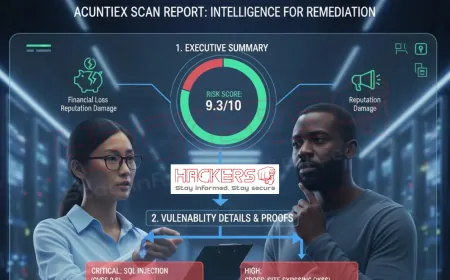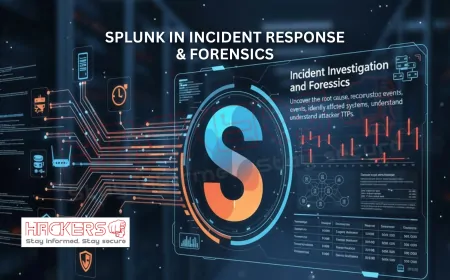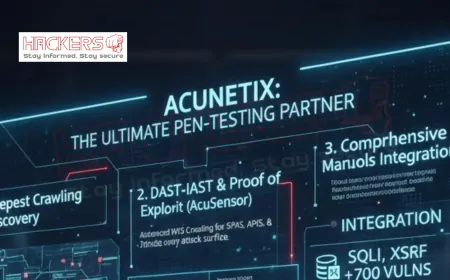What Is Nikto and How Does It Detect Web Server Vulnerabilities?
Imagine you're running a website that thousands of people visit every day. It looks great, works smoothly, and brings in traffic. But what if a hacker finds a hidden weakness in your server and gains access to sensitive data? Scary, right? This is where tools like Nikto come in. Nikto is a free, open-source web server scanner that helps identify potential security flaws before malicious actors exploit them. In this blog post, we'll explore what Nikto is, how it works, and why it's an essential tool for anyone managing a web server. Whether you're a beginner or an experienced sysadmin, you'll walk away with practical knowledge to secure your online presence.

Table of Contents
- Introduction to Nikto
- History of Nikto
- How Nikto Works
- Installation Guide
- Basic Usage
- Common Vulnerabilities Detected
- Nikto Command Options Table
- Best Practices When Using Nikto
- Limitations of Nikto
- Conclusion
Introduction to Nikto
Nikto is a command-line tool designed to scan web servers for vulnerabilities. It checks for outdated software, misconfigured servers, and potentially dangerous files or scripts. Unlike more complex security suites, Nikto focuses specifically on web servers, making it lightweight and fast. It's widely used by security professionals, penetration testers, and website owners who want to ensure their servers are secure.
The tool sends thousands of requests to a target server and analyzes the responses. Based on patterns in headers, file structures, and error messages, Nikto flags issues that could lead to attacks like SQL injection, cross-site scripting (XSS), or unauthorized access.
History of Nikto
Nikto was first released in 2001 by Chris Sullo and David Lodge. It started as a Perl script and has since evolved into a robust scanning engine. Maintained under the Netsparker project and now part of the Open Web Application Security Project (OWASP) ecosystem, Nikto receives regular updates to its vulnerability database. As of 2025, it includes over 6,700 vulnerability checks and continues to grow with community contributions.
How Nikto Works
At its core, Nikto uses a database of known vulnerabilities and server behaviors. Here's a simple breakdown of its process:
- HTTP Requests: Nikto sends various GET and HEAD requests to the server, probing common directories, files, and scripts.
- Response Analysis: It examines HTTP headers, status codes, and page content for signs of misconfiguration or outdated software.
- Pattern Matching: Using regular expressions (regex), Nikto matches responses against known vulnerable patterns.
- Reporting: Results are compiled into a detailed report, highlighting risks with severity levels.
For example, if a server reveals its exact version in the headers (like "Apache/2.2.3"), Nikto will flag it because attackers can look up known exploits for that version.
Installation Guide
Nikto is available on most Linux distributions and can be installed easily. Here are common methods:
- Kali Linux: Comes pre-installed. Just type
niktoin the terminal. - Ubuntu/Debian: Run
sudo apt update && sudo apt install nikto - Fedora: Use
sudo dnf install nikto - Windows: Install via WSL (Windows Subsystem for Linux) or use the standalone Perl version from GitHub.
- From Source: Clone the repository with
git clone https://github.com/sullo/nikto.gitand run the Perl script directly.
Always update the vulnerability database after installation using nikto -update.
Basic Usage
The simplest way to run Nikto is with the -h flag to specify the host:
nikto -h https://example.comThis performs a default scan and outputs results to the terminal. You can save the output to a file:
nikto -h https://example.com -o report.html -Format htmlNikto supports SSL, proxies, and authentication. For example, to scan behind a login:
nikto -h https://example.com -id username:passwordCommon Vulnerabilities Detected
Nikto excels at finding the following issues:
- Outdated server software (e.g., old Apache or Nginx versions)
- Default files left on the server (like phpinfo.php)
- Misconfigured directories allowing directory listing
- Known vulnerable CGI scripts
- Exposed .git or .svn repositories
- Server headers revealing sensitive information
- Weak SSL/TLS configurations
Nikto Command Options Table
| Option | Description | Example |
|---|---|---|
| -h | Specify the target host | nikto -h https://example.com |
| -p | Specify port (default: 80 or 443) | nikto -p 8080 -h 192.168.1.1 |
| -ssl | Force SSL mode | nikto -ssl -h https://site.com |
| -id | Provide HTTP basic authentication | nikto -id user:pass -h site.com |
| -o | Output file | nikto -o scan.txt |
| -Format | Output format (html, txt, xml) | nikto -Format html |
| -Tuning | Run specific test categories | nikto -Tuning 1 2 3 |
| -evasion | Use evasion techniques to bypass IDS | nikto -evasion 1 |
| -update | Update databases | nikto -update |
| -list-plugins | List available plugins | nikto -list-plugins |
Best Practices When Using Nikto
To get the most out of Nikto, follow these tips:
- Always get permission before scanning a server you don't own.
- Run scans during off-peak hours to avoid performance impact.
- Use output formats like HTML for better readability.
- Combine Nikto with manual testing for deeper analysis.
- Keep the tool and databases updated regularly.
- Review false positives: not every flag is a real threat.
Limitations of Nikto
While powerful, Nikto has limitations:
- It relies on known signatures, so zero-day vulnerabilities won't be detected.
- False positives are common, especially on custom applications.
- It doesn't exploit vulnerabilities, only identifies them.
- Loud scans can trigger intrusion detection systems (IDS).
- No support for authenticated application-layer testing (e.g., logged-in user scans).
Conclusion
Nikto remains one of the most accessible and effective tools for web server security testing. Its simplicity, combined with a vast database of checks, makes it ideal for beginners and experts alike. By regularly scanning your servers with Nikto, you can catch misconfigurations and outdated components before they become liabilities. Remember: security is an ongoing process. Use Nikto as part of a broader strategy that includes patching, monitoring, and user education. Stay proactive, stay secure.
What is Nikto?
Nikto is an open-source web server scanner that identifies security vulnerabilities by sending HTTP requests and analyzing responses.
Is Nikto free to use?
Yes, Nikto is completely free and open-source under the GNU General Public License.
Who should use Nikto?
Web administrators, security testers, developers, and anyone responsible for maintaining a web server.
Can Nikto hack a website?
No, Nikto only scans and reports vulnerabilities. It does not exploit them.
How often should I run Nikto?
At minimum, monthly. Run it after any server update or configuration change.
Does Nikto work on Windows?
Yes, via WSL, Cygwin, or the standalone Perl version.
Can Nikto scan behind a login?
Yes, using the -id option for HTTP basic authentication.
What does OSVDB mean in Nikto reports?
OSVDB was a vulnerability database. References are now mapped to CVE or other IDs.
Is Nikto safe to run on production servers?
Yes, but schedule during low traffic and monitor server load.
How do I update Nikto's database?
Use the command: nikto -update
Can Nikto detect SQL injection?
It can flag vulnerable scripts, but not actively test for SQL injection.
What are false positives in Nikto?
Warnings about issues that aren't actually exploitable in your environment.
Does Nikto support proxy scanning?
Yes, use the -useproxy option with your proxy URL.
Can I scan multiple hosts at once?
Yes, provide a file with hosts using -h @hosts.txt
What output formats does Nikto support?
Text, HTML, XML, CSV, and MSF (Metasploit).
How do I reduce false positives?
Use -Tuning to limit tests, or exclude plugins with -Plugins-
Is Nikto part of OWASP?
Yes, it's an official OWASP project.
Can Nikto detect XSS vulnerabilities?
It flags known vulnerable scripts, but doesn't test for XSS directly.
What is the -evasion option?
It uses techniques to bypass intrusion detection systems during scans.
Where can I download Nikto?
From GitHub: https://github.com/sullo/nikto
What's Your Reaction?










































































